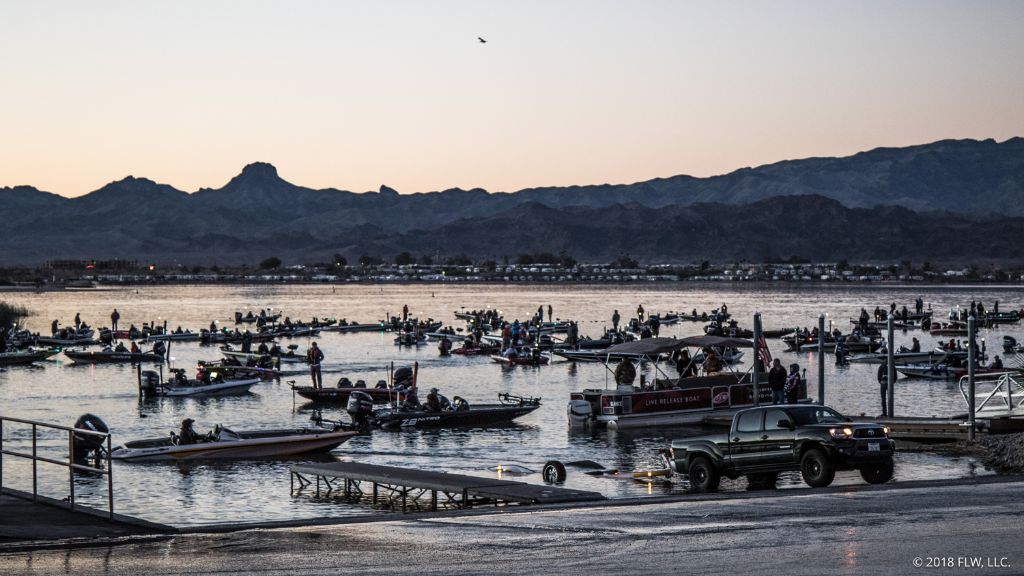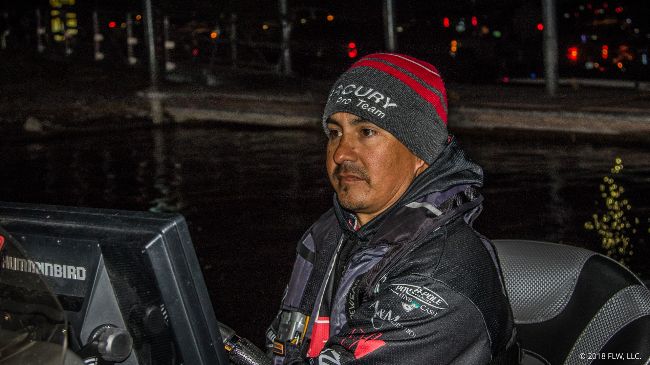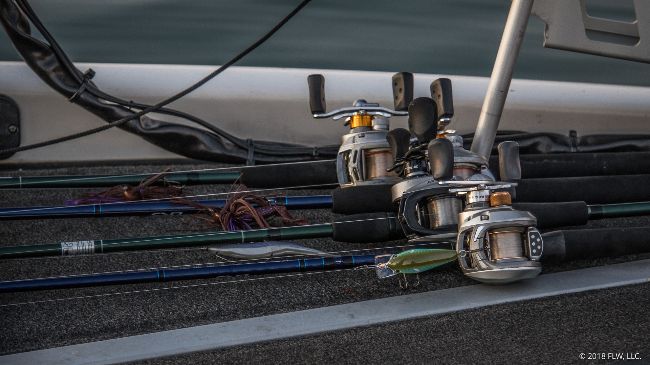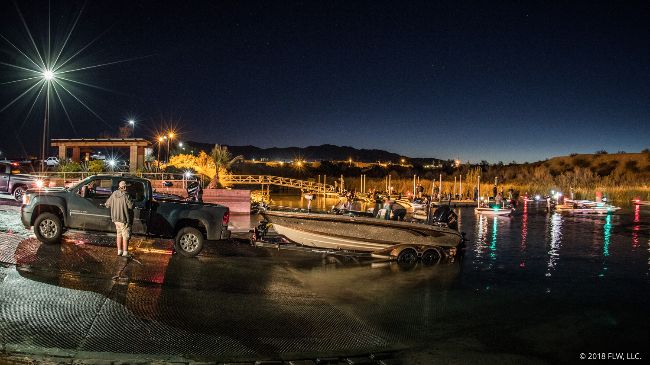Another Prespawn Desert Battle
Havasu should show out for Costa FLW Series Western Division opener

FLW fans have grown accustomed to the Costa FLW Series Western Division kicking off on Lake Havasu in recent years, and this year’s bout should be as good as ever. The tournament is presented by Ranger and hosted by the Lake Havasu City Convention & Visitors Bureau and features a full field of 154 boats – the largest Western Division field since 2013. It’s an increase in field size of about 20 percent over 2017 on a lake known for finicky fish, but the extra boats shouldn’t hurt things too badly – in 2015 the field was nearly 150 boats and 11th place actually weighed a pound more than in 2017.
About the fishery
The Colorado River along the California and Arizona border was dammed up back in 1938 to create Lake Havasu. At a little more than 19,000 surface acres, Havasu isn’t gigantic, but it’s big enough for a good-sized tournament and has a healthy population of largemouths and smallmouths. Flowing from the northwest to the southeast, the lake is split roughly into four portions: The Colorado River, the basin, the stretch running from the basin to the dam and the Bill Williams arm.
The Colorado River offers current and backwater that adventurous anglers can explore and is generally shallower and dirtier than the rest of the lake. The main basin has the best mix of smallmouths and largemouths and is deep and relatively clear. Running toward the dam, the water clarity increases and the shoreline steepens. The arm formed by the Bill Williams River is warmer and dirtier than the rest of the lake.
Tournaments on Havasu are usually won with a mix of smallmouths and largemouths, and there is a pretty fair variety of cover for anglers to fish. There’s plenty of rock, tules, timber, some grass and a ton of man-made cribs that are peppered all over the lake.

Current conditions
Havasu is currently almost 2 feet lower than it was last year and that has made navigation tricky in some areas and generally hampered the shallow tule-based bite. However, that doesn’t mean there aren’t bass shallow. The water is warming into the upper 50s and low 60s and that naturally has some bass heading toward the bank.
Joe Uribe Jr., who has won the last two times FLW stopped at Havasu, summed things up quite nicely.
“The fishing has been a little tough,” says Uribe. “For the weather and the conditions we’re having it’s surprisingly tough. I think it’s the full moon that we had [last week] and the lack of grass – the grass is pretty much gone and the river and the lake are real low. A lot of areas people usually like to fish are pretty much too shallow.”
Uribe thinks that the winner will have to hit the fish somewhere en route to their spawning grounds.
“The main lake bite is still the most predominant, the difference between this year and last year is that it has been warmer than usual, so guys will be running around catching fish on beds,” says the Arizona pro. “But guys that know the lake, like myself, we’re going to be fishing staging fish, that’s how this will be won.”

Tactics in play
Because Havasu is running a bit clearer than normal and the wind is forecast to be fairly light during the event, finesse tactics should play strong. Small jigs, Ned rigs, drop-shots and little swimbaits will account for plenty of weight. Crankbaits are also popular on Havasu for targeting the many man-made cribs and brush piles. Additionally, larger swimbaits and other baits designed to trigger a big bite can’t be counted out – Uribe has proven that in the last two go-rounds.
Critical factors
- Pressure – Havasu has a reputation for fast-learning bass and 150+ anglers should give them plenty of learning opportunities. Adapting location or presentation to trigger pressured fish could be key.
- Cages and brush – Fishing unique targets in middepth areas seems to play a lot on Havasu and we could see those man-made bits shine this week. You’ve got to be pretty dialed to do it efficiently, but folks like Shaun Bailey and Uribe can do it with ease.
- The morning bite – With fairly light winds in the forecast it’ll be key to get on the board early while the bite is good.

Dock talk
There’s a pretty good mix of optimism and pessimism to be found this week. Shaun Bailey thinks practice went quite well – he says he only fished subpar locations and still caught bass.
Things have not gone so well for Hunter Schlander.
“It’s been really tough, I’m struggling to get bites,” says Schlander. “I feel like this is going to be one of those where if you get four or five bites a day you can get a check and maybe make it into the cut.”
Todd Woods was positively giddy at registration and has his fingers crossed his fish don’t decide to move shallow with all this lovely warm weather.
“The way I’m catching them, the fish are still in their winter mode, they’re deep,” says Woods. “I believe there will be a number of 20-pound bags of smallmouth. It seems like the fish are really, really healthy and there are a lot of them. This is probably the most fish I’ve seen in the last few years.”
As for weights, look for similar results to 2015 and 2017. Havasu has plenty of nice fish, but 15 pounds goes a long way and averaging a bag in the upper teens should be enough for a win.
Tournament details
Format: All 154 boaters and co-anglers will compete for two days. The top 10 boaters and co-anglers based on cumulative weight after two days of competition will advance to the third and final round, with the winner determined by the heaviest cumulative three-day weight.
Takeoff Time: 7:30 a.m. MT
Takeoff Location: Lake Havasu State Park-Windsor Beach, 699 London Bridge Road, Lake Havasu City, Ariz. 86403
Weigh-In Time: 3:30 p.m. MT
Weigh-In Location: Lake Havasu State Park-Windsor Beach, 699 London Bridge Road, Lake Havasu City, Ariz. 86403